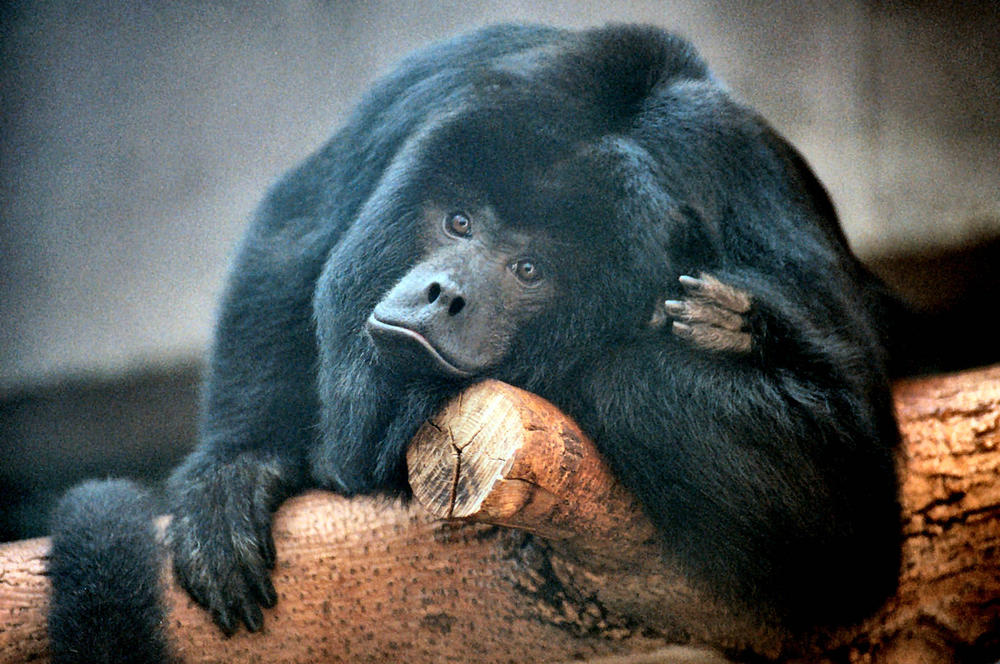- Black Howler
Taxobox
name = Black Howler Monkey
status = LC
status_system = iucn3.1

image_caption = Male atCleveland Metroparks Zoo

image2_caption = Female at theHenry Doorly Zoo
regnum =Animal ia
phylum =Chordata
classis =Mammal ia
ordo =Primate s
familia =Atelidae
genus = "Alouatta "
species = "A. caraya"
binomial = "Alouatta caraya"
binomial_authority = (Humboldt,1812 )The Black Howler Monkey ("Alouatta caraya") is a species of
howler monkey , a largeNew World monkey , fromArgentina ,Bolivia ,Brazil andParaguay , being the southernmost member of the "Alouatta "genus . Only the male is black; females are overall pale buff.Description
It lives in groups of 3 to 19 individuals (usually 7 to 9). There are usually 1-3 males for every 7-9 females in a group. When mating, males and females within a single group pair off.
Named for their vocalizations, they may be heard most often around sunrise. This "dawn chorus" sounds much more like roaring that howling, and it announces the howlers' position as a means to avoiding conflict with other groups. The call can be heard up to 5 km away.
These monkeys commonly sleep or rest up to 80% of the day, making it one of the least active monkeys in the New World. Their habitat is forest where they eat mostly leaves, but also will eat the occasional fruit, such as figs. They generally prefer walking and climbing to running or leaping. The prehensile tail is very strong and acts as a fifth limb, allowing the monkeys greater versatility when climbing and allowing them greater safety in the occasional fall from a high branch. Because their limb structure makes terrestrial movement awkward, they spend most of their time in the trees and only come down for water during dry spells. Otherwise the monkeys drink by wetting their hand on a moist leaf and then licking the water of their hand. Their lifespan is up to 20 years, but more commonly 15 years in the wild.
References
* Database entry includes justification for why this species is of least concern
*MSW3 Groves|pages=148
*Neotropical Rainforest Mammals (1997), Louise Emmons and Francois Feer
Wikimedia Foundation. 2010.
